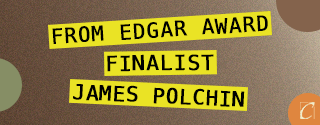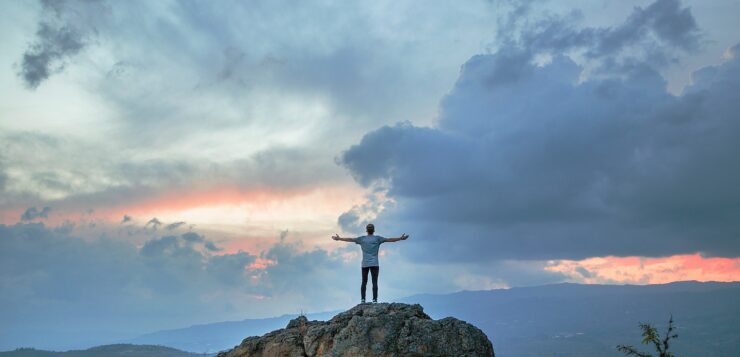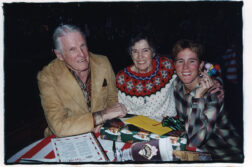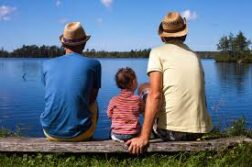
By sixth grade I was six feet tall, towering over most of my teachers, but I was still just a child. My budding personality clashed with my parents’ strict religious worldview. My father thought I was too shy, too emotional, too… feminine. I was closer to my mother, but even she struggled to understand me.
In junior high school, I saw that I wasn’t developing like other boys. I was teased for my small genitals and breast growth. Our family doctor assured my mother that I’d eventually be “normal” but my biology textbook gave me doubts: it said “giants are usually sterile.”
I was six-foot-ten by the end of high school, and primarily attracted to boys. I made female friends, but I wanted to suck some dick. I found boys willing to experiment, but having a boyfriend was out of the question.
I told my parents I might be homosexual when I was fifteen. They made it clear, by prayer and psychiatric intervention, they expected me to be straight. That summer after I graduated high school, before a trip to Alaska with my best friend, my mother asked me, “Has your ‘homosexual’ issue been resolved?” Faced with her disapproval, I said it was. I thought something was wrong with me, but the seeds were sown.
To maintain appearances, I dated tall women. When I accepted a teaching position in Thailand in 1970, my pastor wanted me to marry my girlfriend before I left. I was reluctant, but she was everything I was told I should want, so we got engaged.
During my stay in Thailand from 1970 to 1971, I felt like the tallest person there. Everywhere I went people said with a thumbs up, “Yaks hiy!” which means “Big giant.” I met people called “kathoey” meaning “ladyboys,” which are biological men that were fully regarded as women in Thai society.
I met the most beautiful Malaysian man while I vacationed there. It wasn’t sexual, but male affection was just normal; there was no taboo. I had never experienced genuine male intimacy, and I wanted more.
When I returned home to Spokane, my fiancé wanted to have children. I kept thinking about that biology textbook, so I got a semen analysis, and found out, indeed, I was sterile. I flew home early to straighten things out, but when I said I was bisexual, she brought me to her minister to expel the “homosexual demon.” Safe to say, it didn’t work, and we broke up.
Everyone in my life said my homosexuality was a phase, but the counterculture was challenging the taboo. So, I embraced it. I began dressing in drag, and looked gorgeous. I told my parents I was bisexual, and they said I needed to change back, but it wasn’t a choice. I tried to be straight and failed.
I went to an infertility clinic in 1976 to determine why I was sterile. An endocrinologist ran a karyotype test that showed I had XXY sex chromosomes, instead of XX (female) or XY (male); I was caught between the sexes on the cellular and anatomical level.
I was diagnosed with Klinefelter’s syndrome, which explained my sterility, my low testosterone, my undescended testicles, my breasts, my small phallus, and my large sensitive nipples. It even explained my height, because hormones signal the long bones in the arms and legs to stop growing.
My endocrinologist prescribed testosterone replacement therapy. For side effects, all he told me was that my sex drive would increase, and it did. He didn’t explain that I’d be going through a second puberty in my thirties, or offer me counseling to help deal with this metamorphosis. This was not informed consent.
After that, my entire body began to masculinize. Dark hair sprouted everywhere. It felt like my curvaceous, androgynous body was stolen and replaced with this masculine physique that I didn’t recognize in the mirror. No one told me that synthetic testosterone would suppress my natural production. It felt like my feminine side was dying.
My father called me a eunuch since he could best relate to biblical words. My mother was ashamed, and wanted me to keep it a secret. I felt like a freak.
At a bisexual potluck two years later in 1978, I met Peter, with his short frame and scruffy beard. I was captivated. Our eyes met, he sauntered over and we started making out. I was smitten, and he ended up changing my life forever. I never thought I’d live to see my wedding day, but we celebrated two. On our anniversary, we had a commitment ceremony. My mother kept asking, “This isn’t a wedding, is it?” But it was our wedding, even if it wasn’t legal. Nevertheless, the day unfolded beautifully. It was officiated by the first openly gay rabbi in America. I cried as we exchanged rings and vowed to cherish both our interdependence and our need for independence.
Once same-sex marriage was legalized, we made it official on our thirtieth anniversary. It was not a grand ceremony, but it was significant to us.
When I learned that Klinefelter syndrome was considered an intersex variation it helped me reframe my androgyny as natural. The predominant narrative is that there are only two sexes, but there is a broad spectrum encompassing a vast array of variations in chromosomes, hormones, and sexual anatomy. There are also XY women (androgen insensitivity syndrome), XX men (de la Chapelle syndrome), and many other combinations, including Mosaicism, where someone has two or more sets of cells that differ genetically from one another.
Many intersex variations aren’t apparent at birth, and stigmatization has historically led to underreporting. Experts now estimate between 0.05% and 1.7% of the population qualify as intersex. Klinefelter’s syndrome occurs in one in 500 “male” births. So, I am rare, but not alone.
In 1995, I became the first volunteer for the Intersex Society of North America. ISNA’s mission was to eliminate the shame and secrecy surrounding intersex variations, and to stop the irreversible and destructive surgical and hormonal interventions doctors perform on non-consenting infants and children to “normalize” intersex presentations. These procedures can cause infertility, incontinence, loss of sexual function and lifelong psychological distress. Our efforts launched an international wave of activism.
I published an essay in 1998 titled “Caught Between: An Essay on Intersexuality.” It was Chapter 8 in the book, Intersex in the Age of Ethics, which was the first time I shared my story so publicly. After that, I contributed essays to a few anthologies, did interviews for radio programs and documentaries, and volunteered to speak at schools, churches, and conferences.
I served on the ISNA Board of Directors, and volunteered for multiple like-minded organizations, like the San Francisco Human Rights Commission’s LGBT Advisory Committee for Organization Intersex International and Marriage Equality USA. I helped organize the first governmental hearing about the plight of the intersex community. And I petitioned the Superior Court of California to become one of the first three legally recognized “non-binary” people in California. I received a “Local Hero” award from San Francisco’s PBS TV station in 2008 for my intersex community volunteer activism, and was invited to speak at the award ceremony.
Most people see me as a tall gay man. They can’t see my ambiguous sex chromosomes or my different anatomy. Most people don’t know their own sex chromosomes.
Living in this tall body often feels like being an extraterrestrial, on the outside of culture looking in. I don’t assume anything anymore. I don’t know who is male or female, gay or straight, or anything else. My life is a testament that our bodies are just vessels. No label encapsulates all that I am. I am multitudes, and if we’re honest, we all are.
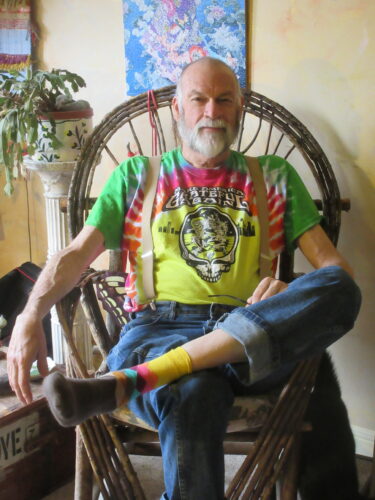 David Cameron Strachan was born in 1947 in Deep River, Ontario, and grew up in Walnut Creek, California.
David Cameron Strachan was born in 1947 in Deep River, Ontario, and grew up in Walnut Creek, California.
